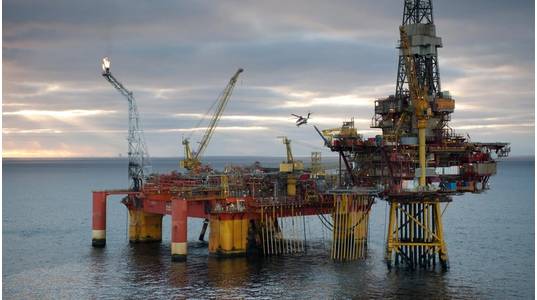
Norway's Equinor said Monday it has, with its partners, decided to shut down the Veslefrikk field in the Norwegian part of the North Sea in the spring of 2022.
"After more than 30 years on stream and over 400 million barrels of oil equivalent the Veslefrikk partnership is now planning for shutdown of the field in the spring of 2022. The plugging of wells has already started," Equinor said.
The field was discovered in 1981, and when it came on stream in 1989, Veslefrikk’s development concept, as a first on the Norwegian continental shelf, consisted of a floating production unit.
Licensees in the field are Petoro AS 37%, Repsol Norge AS 27%, Equinor Energy AS 18%, and Wintershall Dea Norge AS 18%.
"The partnership has invested some NOK 20 billion (~USD 2,35 billion) in Veslefrikk, and the field’s productive life has been extended several times. When the plan for development and production (PDO) was submitted the field was expected to be shut down as early as in 2009," Equinor said.
“Veslefrikk was a technologically pathbreaking development which has paved the way for new, lighter offshore structures after the era of concrete giants in the North Sea,” says Geir Sørtveit, Equinor’s senior vice present for Operations West.
400,000,000 barrels
"In recent years a formidable job has been done to increase the efficiency at Veslefrikk, extending the field’s productive life and maximizing value creation. Once the field is shut down Veslefrikk will have produced more than 400,000,000 barrels of oil equivalent. This is equivalent to the energy demand for 22 years from all of Norway’s single-family houses, and has created great value for Equinor, the partners, owners and society,” Sørtveit concludes.
The floating unit Veslefrikk B is a semi-submersible production platform tied in to the fixed wellhead platform Veslefrikk A. In 2002 the field also became the host of Huldra with a shared control room and crew, in addition to processing condensate from this now decommissioned field. Veslefrikk is operated from Sandsli outside Bergen, where it is organized together with the operation of the Oseberg area.
"The Veslefrikk development was important to the development of regulations for the use of floating installations in the petroleum industry, which have seen a sharp increase," Equinor says.
Veslefrikk B was originally the West Vision drilling rig, owned by Smedvig in Stavanger. The rig was purchased by the then Statoil for conversion to petroleum production, and Smedvig won the contract for staffing maritime crews and drilling services.
Decommissioning
According to Equinor, an environmental impact assessment has been conducted and a decommissioning plan for Veslefrikk was sent to the authorities in the autumn of 2020.
"As the biggest operator we have much infrastructure that must be gradually decommissioned on the Norwegian continental shelf. We have solid project capabilities in the area, and have developed good plans for removing Veslefrikk in a safe and efficient manner,” says Camilla Salthe, Equinor’s senior vice president for Equinor's Field Life Extension (FLX) business area.
"Priority number one for a successful removal project is having no injuries, serious incidents, or emissions to the environment,” Salthe says.
Before Veslefrikk B can be brought ashore, wells must be plugged, platform systems must be shut down and cleaned, and oil and gas export pipelines must be cleaned and disconnected. The plugging of wells started in January this year.
The well plugging will be performed under existing framework contracts, where Archer has the contract for rig operations, and Baker and Ardyne deliver most other drilling and well services. A total of 24 wells will be plugged from the drilling system at Veslefrikk.
Veslefrikk B will be towed to shore for dismantling in the autumn of 2022 and Veslefrikk A is scheduled to be removed in 2025/26.
Three large-size contracts associated with the removal work are scheduled to be awarded in the first half of 2021.
These include the removal and dismantling of Veslefrikk A, which is an “Engineering, Preparation, Removal and Disposal” (EPRD) contract that covers all work in connection with the removal of the platform and subsequent dismantling and recycling; the dismantling and recycling of Veslefrikk B; and work on the seabed in connection with export pipeline cleaning and disconnection.